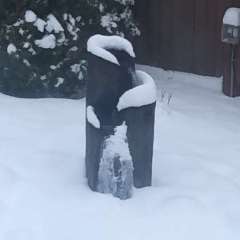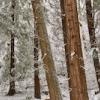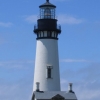
jaya
Members-
Posts
258 -
Joined
-
Last visited
-
Days Won
6
jaya last won the day on February 17 2018
jaya had the most liked content!
Profile Information
-
Gender
Male
-
Location
Everett WA
-
Interests
Computer programming and weather
Recent Profile Visitors
408 profile views
jaya's Achievements
Newbie (1/14)
325
Reputation
-
Wish I could, but I don't have that kind of power! I feel inadequate in even trying to forecast when it will or how much if it does!
-
Is the bottom graph snow for KPAE. If so, wow that is impressive. Snow levels do look like they will generally stay low for a while, and KPAE is at nearly 600 feet, so it could be interesting. That could be especially true if we get into some convergence zone action!
-
Pattern looks like it is ripe for a couple of shots. Midweek mainly for areas south of Seattle into NW Oregon and along the coast. Late in the week looks interesting. Long range looks interesting. Warm air advection type systems sliding southeast with cold air in place is easier for models to handle. But the exact track and strength of the systems will still give high error bars. I'm not going to get too excited until I see the whites of the eyes.
-
Almost 2 inches here in south Everett. All fell in 2 one hour shots of moderate snow, one last night around midnight and the other this morning around 8 AM. Overall, I'm disappointed in my forecast. The snow was really concentrated over northern Snohomish County and along the Strait with other areas getting some, but a lot of dry spots. Modeled pressure gradients were too strong. Better luck next time.
-
Snowing in South Everett.
-
Live by the WRF, die by the WRF. It gives very pretty and plausible solutions. But errors can be huge and consistency can be an issue. It can grossly overdo terrain effects when it comes to rain shadowing and to terrain enhanced precipitation. Look for types of precipitation (convective vs stratiform), general patterns, model blends work best ... Model riding will only make you dizzy and frustrated.
-
I tried pasting an animated gif I created but could not get it to post. It is created by going to tropical tidbits and the NW region for the ICON model. Go to 00Z Mon for the Snow total graphic. Create a trend GIF for the last 12 runs at that time. Look at the consistency. You won't find that with the other models. Now it may be consistently wrong, but so far I've seen some potential for this model. Meso models are really meant for convection and seem to over mix things. The UW WRF has some other issues.
-
I really like the consistency of ICON. It will be interesting to see if it works out.
-
I am not at work, so don't see as much info (tropical tidbits is all I have seen so far). My last night numbers may be a tad high, but I'm still on board with the general thoughts. The details really won't be seen until things are actually happening.
-
I cry Fake News! here. We work 24 x 7 and don't get holidays off, plus rotating shifts that most people would not bother with.
-
Cold here west of the Cascades and Canadian Coastal Range comes more from aloft than in the low levels. So for snow, not so much of an issue. For extreme cold, you have a point. We won't see temperatures in the single digits F around here with the air mass coming in.
-
I'm not sure I like the details in any of the models. Almost anything can happen. I think big picture instead of mesoscale - and worry about the mesoscale a few hours out. Let's keep an eye on the pressure gradients. If KOTH-KSEA remains strongly southerly, CYWL-KBLI strongly northerly, upper low comes over the area, surface and 850 mb low comes onshore near KHQM and into the south interior, I can't see that someone in W WA doesn't do rather well (2-4 with local 4-6) in the snowfall amount with this arctic front. I do tend to think big, so maybe I'm over forecasting, but I do see potential. Now my bet: We have rather cold air aloft coming in late Sat night into Sunday. Above 300-500 ft above MSL, I can see snow ratios somewhat better than 10-1 (15 to 1 maybe), especially toward the tail end of the event. Who will get the snow? Well, the models typically err in bringing the cold air southward from the Fraser too quickly. I can see it hanging up somewhere from Mt Vernon to N of Seattle for a while before pushing southward. This would focus snow most strongly over this area with the fluffiest snow midday to aftn Sunday away from the water. Port Angeles will do very well as they get upslope and "lake effect.". Still too much uncertainty on the track of the midweek system, but this has some potential to give more widespread accumulations in a warm advection pattern. Anywhere to the north of the track of the low could do well. As a snow lover, I see great potential. Of course, living in the northwest means disappointment and forecasting snow around here is difficult. My bets at this point (based on model means and mainly gut): Bellingham 3 inches (early) High area south of Mt Vernon, 5 inches KPAE: 5 inches North Seattle 3 inches Downtown Seattle 1 inch. Seatac 1.5 inches Olympia 1 inch Areas to the east of Tacoma (Eatonville) 6 inches Port Angeles 6 inches. Low temperature Tuesday morning at KSEA: 19, KPAE 17, KBLI 15, KOLM 13 If it does not work out...oh well, another busted forecast ... but this one is just for fun. jaya
- 9233 replies
-
- 12
-

-
I'm not sure I like the WRF Gfs for snowfall. It seems to overpredict during warm advection cases and underpredict for cold fronts. It may be a temperature threshold problem of some sort. We will see how it works out. I like using QPF, 1000-850mb thickness, 925 temperature, surface temperature, and wind. The WRFGFS, despite many improvements, seems to be too geostrophic with the winds at low levels and over mixes. With Tuesday night's system, the WRF ensembles did okay and the ICON was the winner. The GEM used in tropical tidbits and on our local system is too coarse of a resolution to grade fairly. I also don't like raw snowfall amounts from the ECMWF - preferring the method above.
-
Not that I can find. I have just been looking at it over the past couple of months. Qualitatively, it does look like it performs well, has high resolution, and holds back cold air east and north of the mountains well. It has also done okay with precipitation amounts for the cases I have looked at so far this year. If it has a fault, it may be in initialization. I see that it runs earlier and faster than all of the other global scale models. Either Max Planck Institute has a very powerful computer, or they are running the model with a less vigorous initialization scheme than the other models. ECMWF spends almost a whole cycle time just on its initialization (one factor in their superior performance overall). I'm still trying to get some info on the model and how it works (from a physics and scheduling standpoint).
-
It really would not take much to bring some really cold air into the Pacific NW. It has been close by all winter and is still just north of the Canadian Coast ranges. The upper levels are key, and they look cold. It will not hit 0 in Seattle or anything like that - late in the winter- but this will likely be the coldest we have seen in a while.



